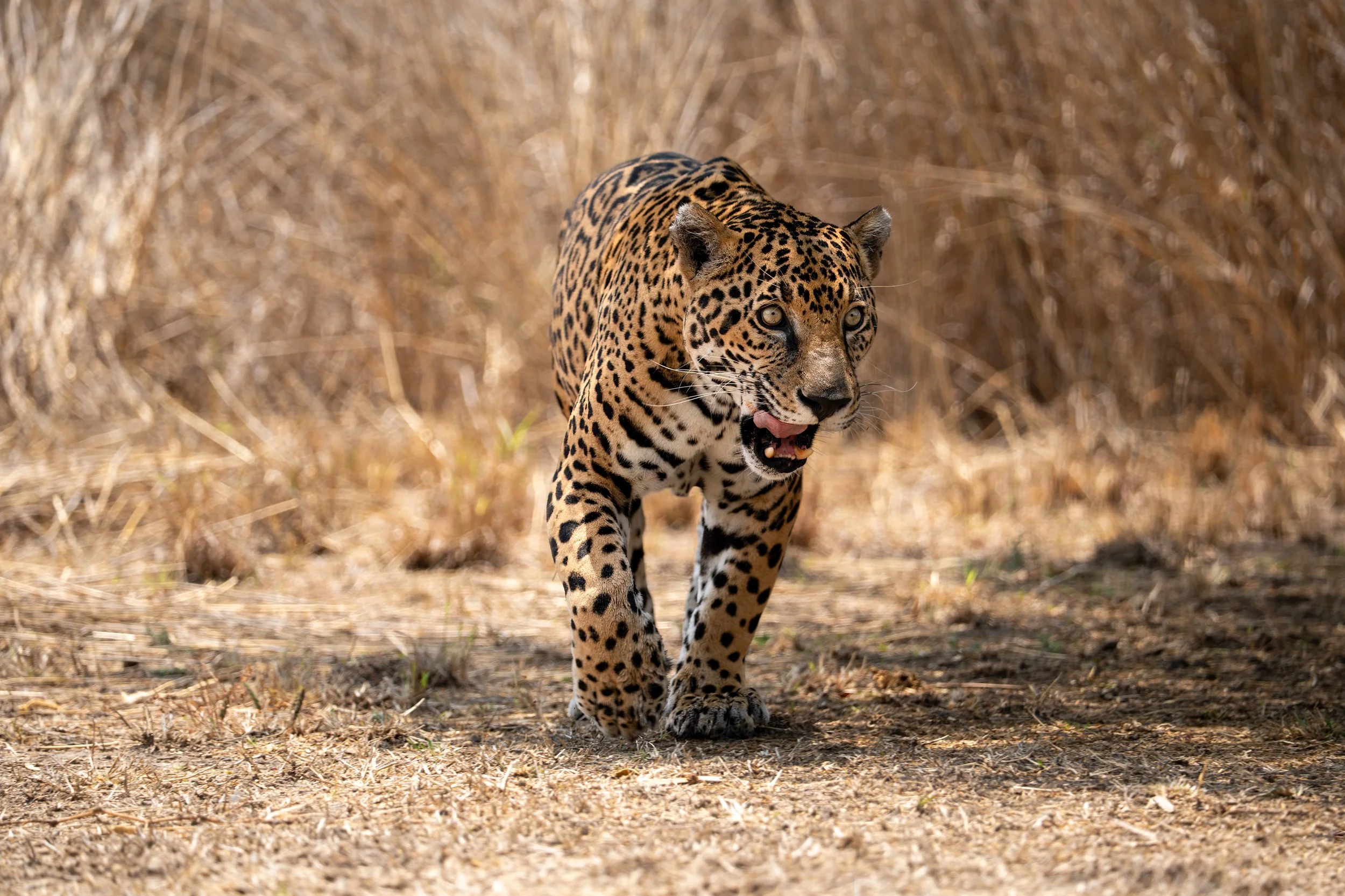Jaguars make a comeback in Mexico
for Trouw
Jaguars are once again roaming the dense forests of southern Mexico. According to a new report published in late August by the National Jaguar Alliance (ANCJ), the population of Latin America’s largest cat has increased by 30 percent over the past fifteen years. While about 4,000 individuals were counted during the first national survey in 2010, the current estimate is 5,326.
“It’s a hopeful development,” says Gerardo Ceballos, ecologist at the Universidad Nacional Autónoma de México (UNAM) and founder of the National Jaguar Alliance. “We’ve shown that these animals are more resilient than we thought, and that conservation efforts truly work.”
The figures come from the largest mammal study ever conducted in Mexico. More than 900 camera traps recorded jaguars for 90 days across fifteen states. In total, more than 400,000 hectares were surveyed in all regions where jaguars are still found.
The highest densities were recorded on the Yucatán Peninsula (1,699 animals) and along the South Pacific coast (1,541). In other parts of the country, such as central Mexico, numbers remain low.
A long history
The jaguar has been an important symbol in Central America since pre-Columbian times. Museums in Mexico are filled with historic sculptures of the imposing creature. Researchers estimate that at the beginning of the 20th century, some 20,000 jaguars roamed the country.
But the population declined for decades due to deforestation, hunting, and the expansion of agriculture and infrastructure. Mexico listed the jaguar as a protected species in 1987. Since 2005, the government, conservation groups, and universities have been trying to reverse the trend.
“When I began my research, we had no idea how many jaguars lived in Mexico,” Ceballos says. “That’s why I founded the alliance in 2005, together with the government and other scientists. The goal was to gather knowledge and develop a national strategy.”
According to Ceballos, the recent progress is due to three factors: the protection of vast natural areas, better collaboration with local communities, and a successful public awareness campaign that has turned the jaguar into a national symbol. “The jaguar is returning not only to the wild, but also to the minds of Mexicans. People are feeling proud of it again.”
Calakmul: one of the world’s jaguar strongholds
Calakmul, a biosphere reserve in the south, is the largest protected jaguar habitat in Mexico. Recognized by UNESCO for its ecological importance, it now has the second-highest jaguar density in the world after Brazil’s Pantanal. The area was previously protected only at the state level, but now receives federal protection and continues to expand. Nearly 1.4 million hectares of jungle are preserved.
A network of ecological corridors connects jaguar habitats, allowing the animals to move safely in search of food and mates. Indigenous forest guardians help monitor camera traps and combat poaching, while conflicts with farmers are being reduced.
“We reached an agreement with the national cattle ranchers’ association,” says Ceballos. “They compensate farmers who lose livestock to jaguars. This prevents retaliatory killings. It’s not a perfect system, but it helps.”
International conservation organizations praise Mexico’s approach as exemplary for Latin America. In many neighboring countries, such as Guatemala, Honduras, and Colombia, jaguar numbers are still declining.
Training for a second chance
Other types of conservation projects can also play a role. Near Oaxaca, in the state of Campeche, an innovative reintroduction program is being run by the organization Jaguares en la Selva. In their rescue center, orphaned or captive-born jaguars are prepared for release into the wild.
In a fenced “wildlife simulator,” the animals (re)learn how to hunt, hide, and interact with their natural environment. Humans keep their distance, and biologists and veterinarians monitor the jaguars through cameras.
In 2021, the first two jaguars were successfully released. “We were the first in Mexico to do this,” says biologist Cristian Enriquez Salvador. “Thanks to satellite collars and camera traps, we saw that they hunted independently and adapted well.”
But the biggest challenge is gaining support from local communities, Salvador says. “Without them, no project is sustainable. We must work with ejidatarios (the community landowners) to build support for conservation.”
Threats remain
Such reintroduction programs are positive but have minimal impact, Ceballos notes. Habitat protection remains the cornerstone of conservation, because progress is fragile.
Tens of thousands of hectares of forest are still lost every year. New infrastructure, such as highways and the controversial Maya Train, further fragments habitats. Illegal trade in jaguar products - teeth, pelts, claws - also continues.
According to the report, at least 8,000 animals are needed for a genetically viable long-term population. Mexico is still far from that goal. “But you have to stay optimistic,” says Ceballos. “Otherwise this work becomes unbearable.”
The numbers show that conservation can succeed; if there is political will, funding, and community involvement. The rise in jaguar numbers does not mean the species is saved, but it shows recovery is possible. And that is important for both the natural and human world, Ceballos emphasizes.
“If you protect the jaguar, you automatically protect entire ecosystems. They need huge territories, so by protecting them you also protect forests, prey species, and countless other organisms. They’re an umbrella species - crucial for ecosystem function. And without healthy ecosystems, our own society collapses.”








